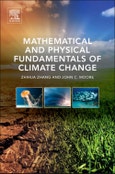Mathematical and Physical Fundamentals of Climate Change is the first book to provide an overview of the math and physics necessary for scientists to understand and apply atmospheric and oceanic models to climate research. The book begins with basic mathematics then leads on to specific applications in atmospheric and ocean dynamics, such as fluid dynamics, atmospheric dynamics, oceanic dynamics, and glaciers and sea level rise. Mathematical and Physical Fundamentals of Climate Change provides a solid foundation in math and physics with which to understand global warming, natural climate variations, and climate models. This book informs the future users of climate models and the decision-makers of tomorrow by providing the depth they need. Developed from a course that the authors teach at Beijing Normal University, the material has been extensively class-tested and contains online resources, such as presentation files, lecture notes, solutions to problems and MATLab codes.
Table of Contents
Preface: Interdisciplinary Approaches to Climate Change Research 1. Fourier Analysis 2. Time-Frequency Analysis 3. Filter Design 4. Remote Sensing 5. Basic Probability and Statistics 6. Empirical Orthogonal Functions (EOFs) 7. Random Processes and Power Spectra 8. Autoregressive Moving Average (ARMA) Models 9. Data Assimilation 10. Fluid Dynamics 11. Atmospheric Dynamics 12. Oceanic Dynamics 13. Glaciers and Sea Level Rise 14. Climate and Earth System Models








